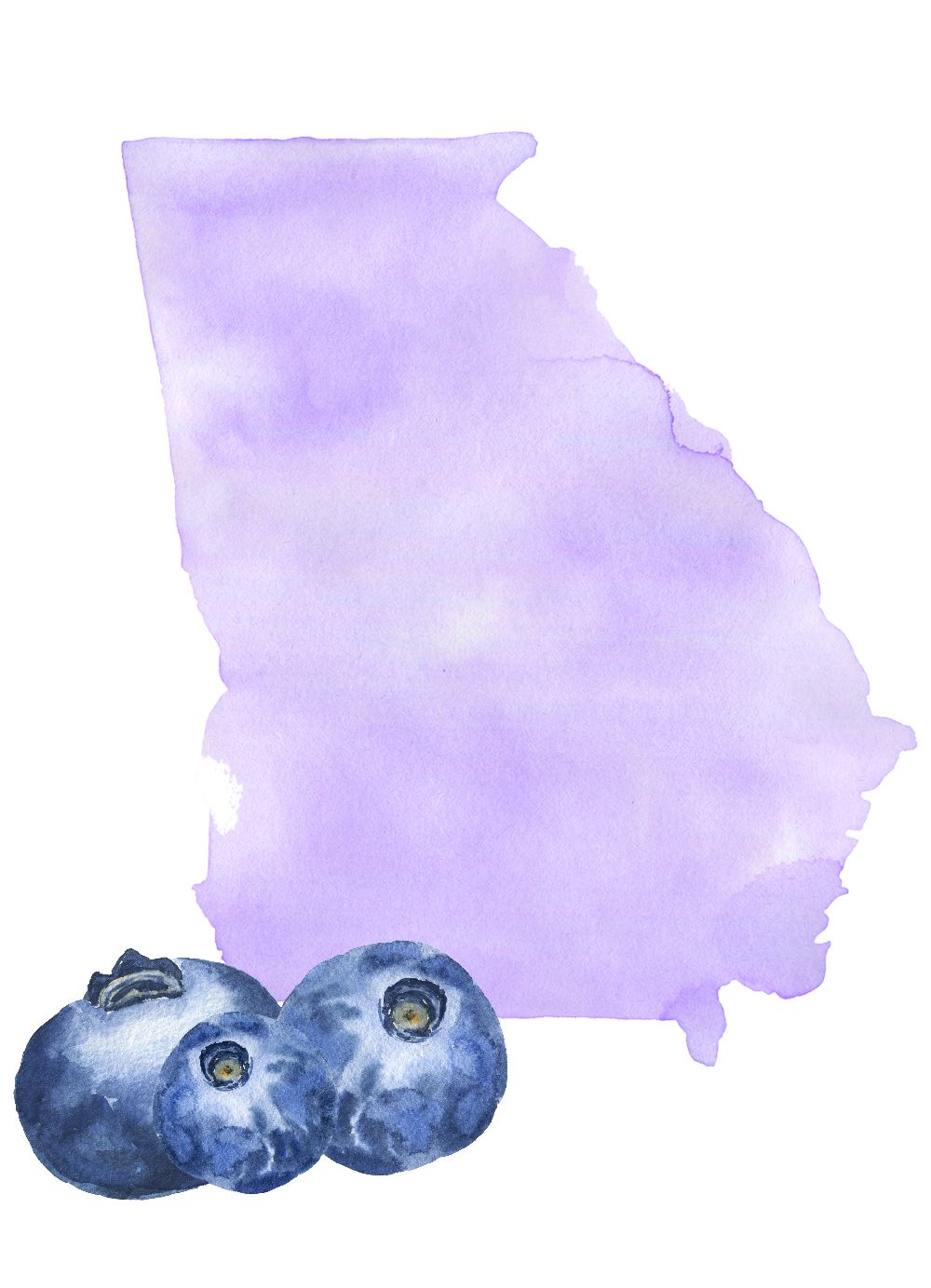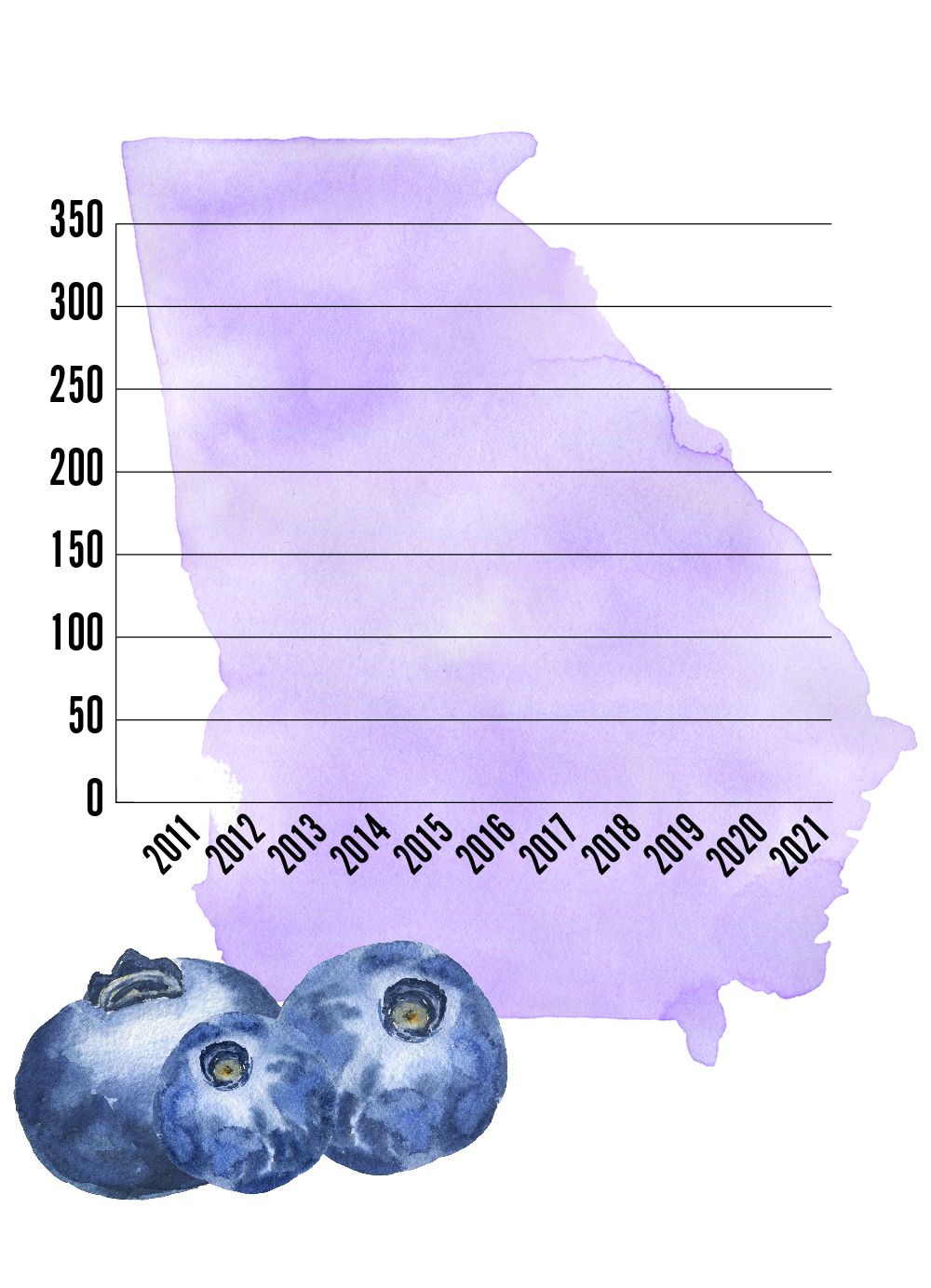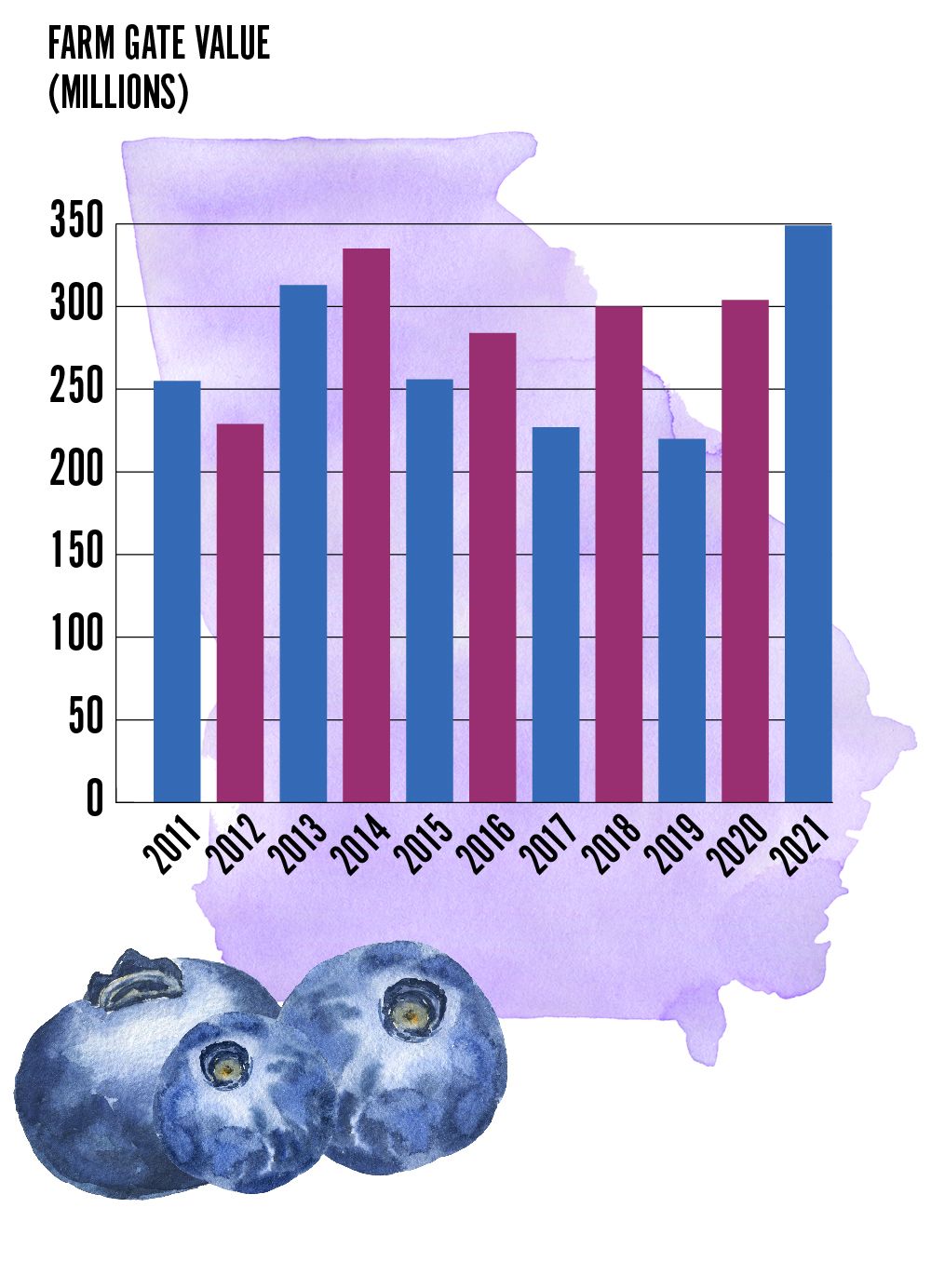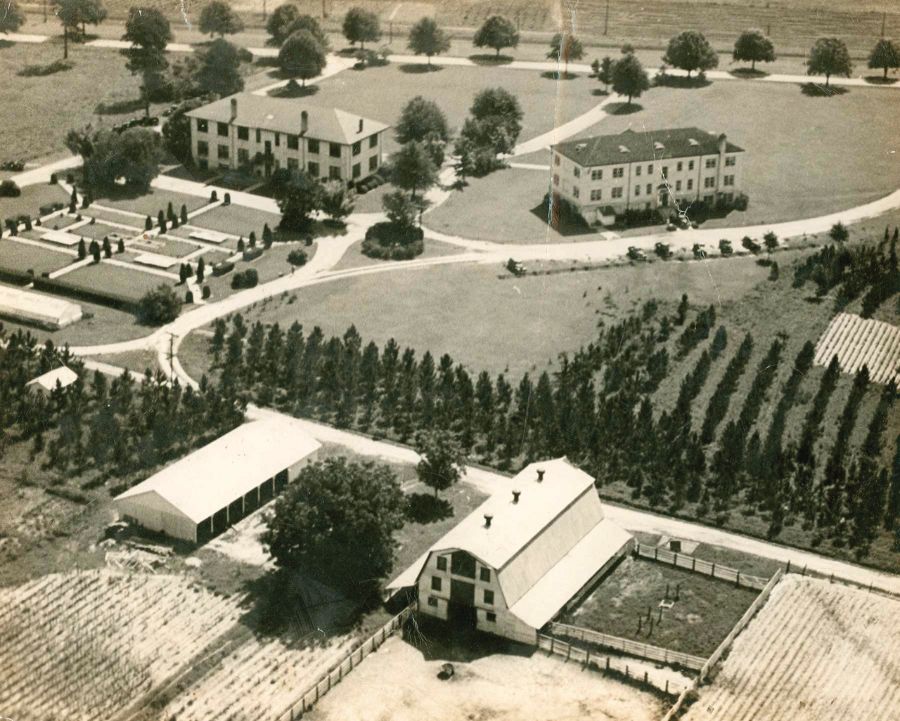FIELD TO PANCAKES: PART 3
Blueberries on the rise
Blueberries comprise a hefty serving of Georgia's fruit industry, as increased production and demand stack up profits in the Peach State.

While peach production in Georgia peaked in 1928 at nearly 8 million bushels, production has slowly dwindled ever since, and the blueberry industry, which started taking root in the state in the 1960s, has captured the top spot among the Peach State’s fruit crops.
While Georgia ranks third nationally for both blueberry and peach production, the blueberry far outstrips it’s fuzzy cousin, with the blueberry industry contributing $348.7 million to Georgia’s economy in 2021 compared to $84.8 million from the peach industry, according to the CAES Center for Agribusiness and Economic Development in the 2023 Ag Snapshots.
“Consumer demand plays a role in production and marketing decisions,” said Ben Campbell, associate professor in the Department of Agricultural and Applied Economics at the University of Georgia’s College of Agricultural and Environmental Sciences. “For instance, from 2011 to 2021 there has been a 97% increase in per capita consumption of blueberries (according to the U.S. Department of Agriculture).”
While berry consumption has grown, Campbell added that it has most likely been at the expense of other Georgia commodities. As blueberry demand has increased, he said, peach demand is down 47%.
Ben Campbell
Ben Campbell

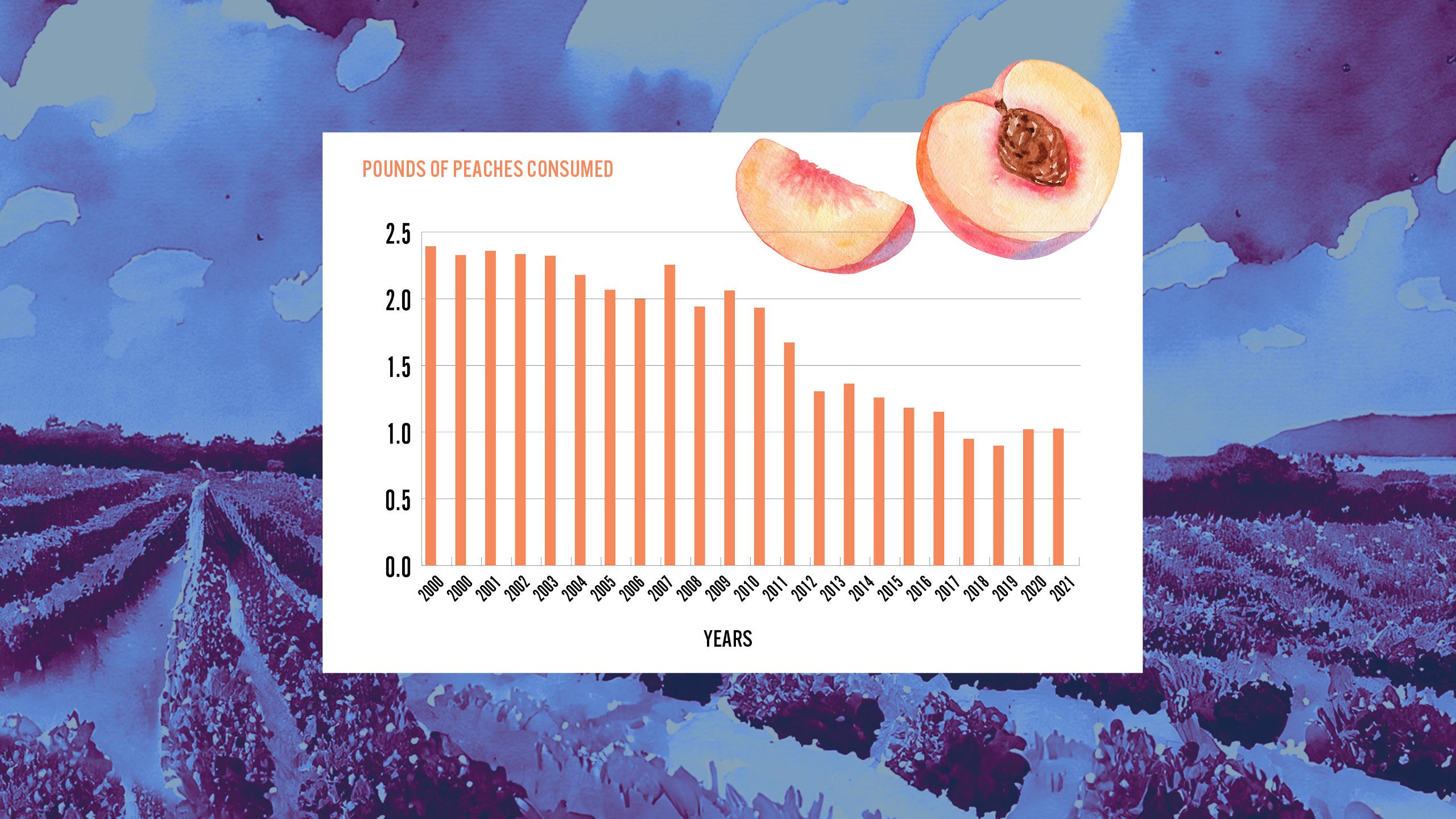
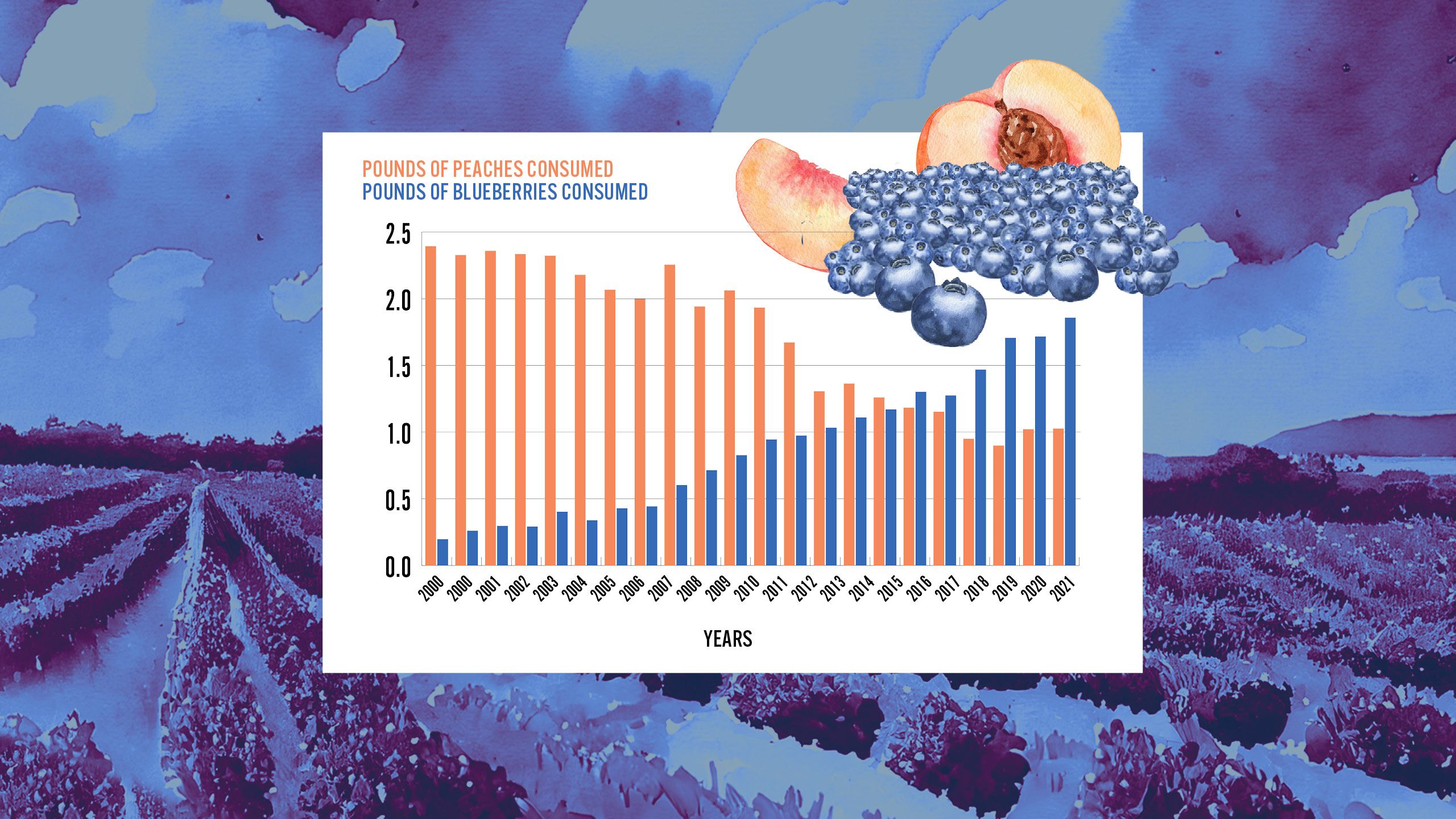

As demand for peaches has waned, blueberry consumption has been on the rise in the U.S.
Pounds per capita consumption of blueberries, peaches and nectarines
(loss adjusted food availability)
Source: USDA Economic Research Service
Greg Fonsah
Greg Fonsah
“The demand for blueberries has always been higher than the supply,” said Greg Fonsah, professor in the Department of Agricultural and Applied Economics. “The excess demand was instrumental in the rapid expansion and productivity of the blueberry industry. This positive consumer demand trend has consistently increased despite multifaceted structural, institutional, policy, weather and natural disaster problems plaguing the industry.”
Per capita consumption has been increasing steadily, Fonsah added, jumping from 1.58 pounds in 2015 to 1.71 pounds in 2016.
“It is worth mentioning that due to consumer demand for blueberries and the increase in production in Georgia and the United States in general, the supply is not enough to meet domestic demand,” Fonsah said. “Barely 50 million pounds of blueberries penetrated the U.S. market from foreign countries in 2005, compared to 400 million pounds in 2018.”
In addition to the increased demand for blueberries, researchers are monitoring consumer preferences on a broader scale.
“Berries as a category have seen tremendous growth over the last decade, but it has not just been for blueberries,” Campbell said. “Raspberries have experienced a 192% increase in consumption. So, on the consumer side, economists are watching consumer preferences as they change over time and gravitate to new products or varieties.”
Tracking the success of a top-10 Georgia commodity
This demand — and the increased importance of the blueberry industry to Georgia’s economy — means CAES agricultural economists follow the complete value and supply chain of the blueberry industry. Researchers are tackling farm management, production and yield, harvesting, packaging, price trends, consumption, import and export trends, and policies that specifically impact the Georgia blueberry industry and the Georgia fruit and vegetable industries at large, according to Fonsah.
“For instance, over two decades ago, there were four kinds of agricultural practices adopted for blueberries in the state of Georgia — rabbiteye, southern highbush, high density and organic blueberry production systems, respectively,” Fonsah said. “Presently, the high-density production system is no longer popular, while machine harvesting is increasing due to the problems caused by labor shortage.”
Seasonality and the impact of trade are drivers of current research, according to Campbell.
“We’re looking at seasonality — competition from other states such as Florida and North Carolina and how Georgia product fits within marketing windows,” Campbell said. “We also focus on the impact of trade; much like seasonality, when does product from other countries hit the market and cause Georgia prices to decrease.”
Other factors include watching profitability — even though prices have increased, the price is most likely not keeping up with input cost increases experienced during the last few years, he added.
Still, data shows a 14% increase in the farm gate value for blueberries from 2011 to 2021. Adjusting for inflation, the increasingly popular berry rose from $306 million to $348 million in value. In the same period, total blueberry acreage increased by 11% from roughly 21,300 acres in 2011 to almost 25,000 acres in 2021, according to Campbell.
“All acreage is not the same, however; fresh highbush has increased by 83% in the last decade while rabbiteye has decreased by 22%,” Campbell said. “Prices, on the other hand, have increased by 4% and 5% for fresh highbush and rabbiteye, respectively, so most of the increased farm gate value is coming from increases in volume, not a price increase.”
Even so, Fonsah said fresh blueberry prices have been one of the drivers of the increase in production.
“In the past two decades — and although fluctuating — the national annual average blueberry prices have increased from $1.29 per pound in 2000 to $2.04 per pound in 2020,” Fonsah said. “Due to better fruit quality and overall cosmetic appearance, Georgia-grown blueberries sometimes receive better prices per pound than the national average.”
Farm gate value of blueberries in Georgia, 2011-2021
Farm gate value of blueberries in Georgia, 2011-2021
UGA blueberry research over time
1926
UGA’s blueberry program begins when 12 rabbiteye selections are tested at the Coastal Plain Experiment Station in Tifton (UGA Tifton Campus).
1939
UGA and USDA start a collaborative breeding program. The first report on blueberries in the USDA Census of Agriculture notes 45 farms, 36 acres and 16,752 quarts produced.
The Coastal Plain Experiment Station, circa 1919
The Coastal Plain Experiment Station, circa 1919
1945
Thomas Brightwell, UGA plant breeder and horticulturist at the Coastal Plain Experiment Station, establishes a 25-acre research farm in Alapaha, 20 miles east of Tifton.
1950
‘Callaway’ and ‘Coastal’ rabbiteye varieties are released. Breeding focuses on rabbiteye varieties for the next 40 years.
Georgia-grown rabbiteye blueberries ready for market, circa 1950
Georgia-grown rabbiteye blueberries ready for market, circa 1950
1955
UGA breeders proudly release the first cultivar with good commercial quality, ‘Tifblue.’ It is the oldest blueberry cultivar still being planted in Georgia.
1970s
The Georgia Blueberry Association is founded in Alma as part of the Department of Housing and Urban Development’s Model Cities Program.
1980s to the early 2000s
UGA Cooperative Extension county agents including Danny Stanaland, John Ed Smith and Bob Boland work with Extension horticulturist Max Austin and plant pathologist Floyd Hendrix to help support the burgeoning group of blueberry growers.
1983
The blueberry variety ‘Brightwell’ is released to honor Thomas Brightwell. This variety covers more acres than others in Georgia.
Thomas Brightwell
Thomas Brightwell
1990s
UGA horticulturists Gerard Krewer and Scott NeSmith begin to develop new varieties and best cultural practices for Georgia’s blueberry crops. Pathologists Harald Scherm and Phil Brannen join the team.
1993
Georgia’s blueberry farm gate value reaches $2 million.
2004
Blueberries overtake peaches as Georgia’s most valuable fruit crop (2004 Georgia Farm Gate Value Report).
2008
The Georgia Blueberry Commission is formed.
2011
Georgia farmers produce 59 million pounds of berries (North American Blueberry Growers Association).
2013
The blueberry farm gate value reaches $312.8 million and UGA Extension expands its blueberry team to include agent Renee Holland, entomologist Ash Sial, horticulturist Erick Smith and an invasive insect expert, Joe LaForest.
2014
Georgia produces 96 million pounds of berries as thousands of acres of new plants come into production, making it the No. 1 state for the fruit (North American Blueberry Growers Association).
2014 to present
NeSmith introduces a series of blueberry plants bred for home gardeners, including 'Cutie Pie', 'Frostberry Delight' and 'Southern Princess'.
2023
Ye "Juliet" Chu is announced as NeSmith's successor in leading the UGA blueberry breeding program.
Ye “Juliet” Chu
Ye “Juliet” Chu
To learn more about UGA blueberry research, resources and news, visit the UGA Extension blueberry page.
Editor's note: This is part three of a three-part series exploring blueberry production in Georgia. Check out the whole series and subscribe to CAES Updates to receive future stories in your inbox.




